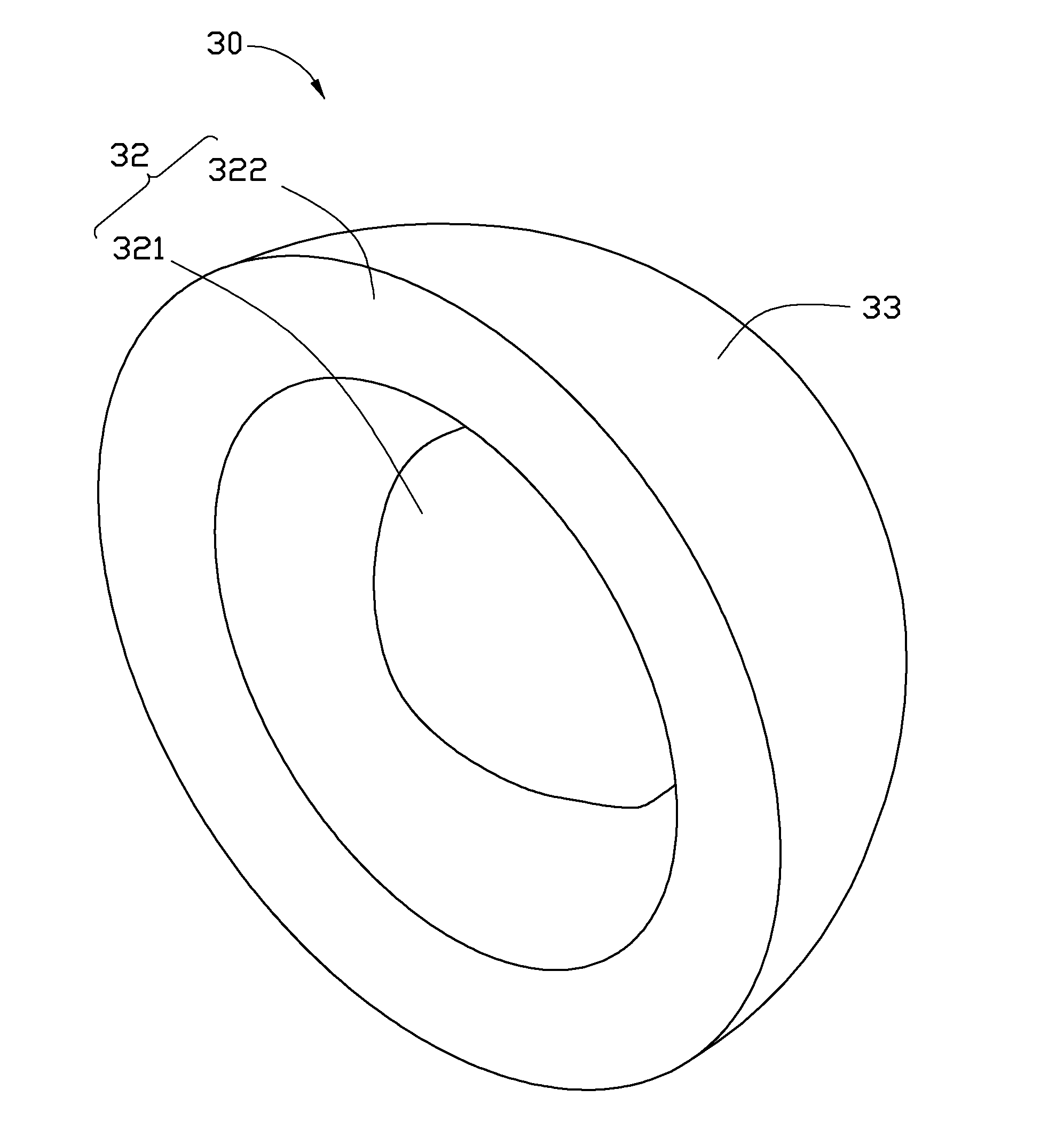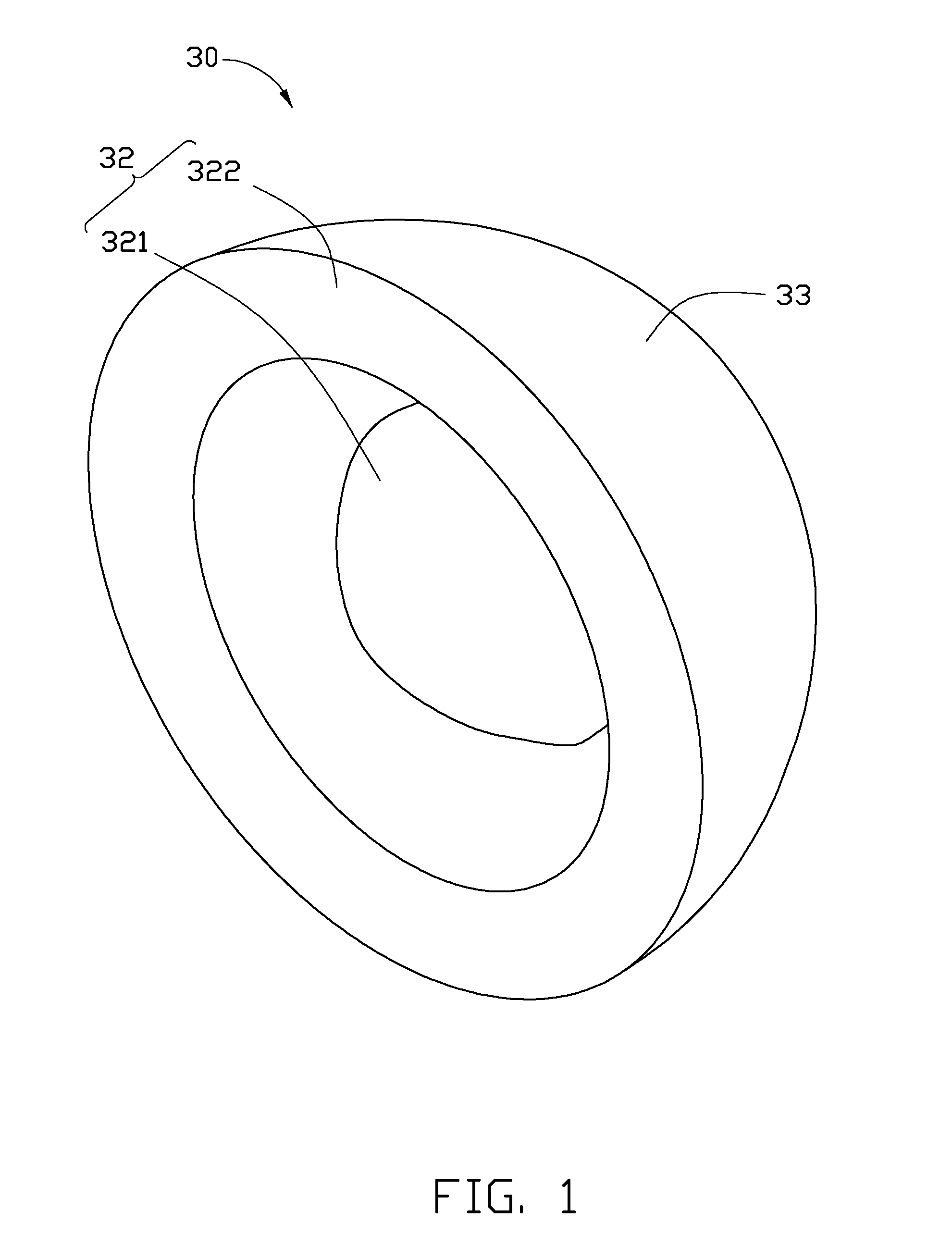LED unit
- Summary
- Abstract
- Description
- Claims
- Application Information
AI Technical Summary
Benefits of technology
Problems solved by technology
Method used
Image
Examples
Embodiment Construction
[0010]Referring to FIGS. 1 and 2, an LED unit 100 in accordance with an embodiment of the present disclosure is illustrated. The LED unit 100 includes an LED module and a lens 30 mounted on the LED module. The LED module includes a printed circuit board 10 and an LED (light emitting diode) 20 mounted on the printed circuit board 10. The printed circuit board 10 may be a MCPCB (Metal Core Printed Circuit Board), a CPCB (Ceramic Printed Circuit Board) or other types of printed circuit boards with good heat dissipation capabilities. The LED 20 includes a heat-conducting base 21, an LED die 22 mounted on a top face of the heat-conducting base 21, and an encapsulant 23 covering the LED die 22 and fixed to the top face 211 of the heat-conducting base 21. A bottom face 212 of the heat conducting base 21 of the LED 20 may be soldered on the printed circuit board 10 to conduct heat generated by the LED die 22 to the printed circuit board 10. In addition, the LED die 22 is electrically connec...
PUM
 Login to View More
Login to View More Abstract
Description
Claims
Application Information
 Login to View More
Login to View More - R&D
- Intellectual Property
- Life Sciences
- Materials
- Tech Scout
- Unparalleled Data Quality
- Higher Quality Content
- 60% Fewer Hallucinations
Browse by: Latest US Patents, China's latest patents, Technical Efficacy Thesaurus, Application Domain, Technology Topic, Popular Technical Reports.
© 2025 PatSnap. All rights reserved.Legal|Privacy policy|Modern Slavery Act Transparency Statement|Sitemap|About US| Contact US: help@patsnap.com



